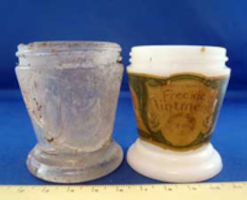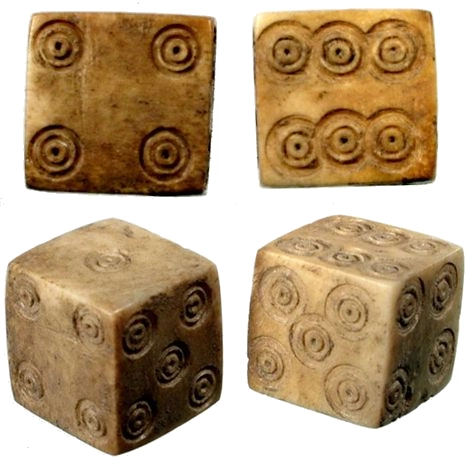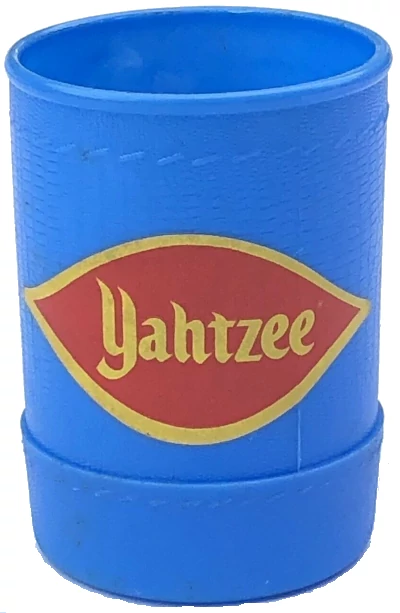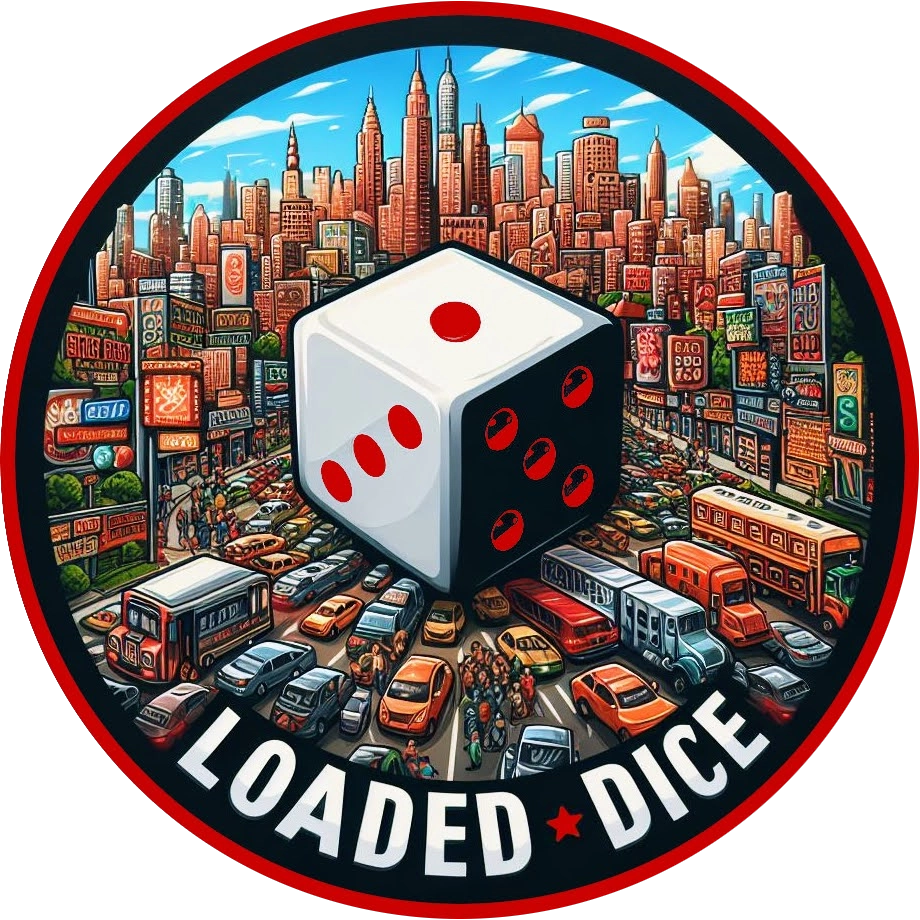Yahtzee Shaker or Amelia Earhart Freckle Cream Jar?
Researchers believe they have discovered artifacts that once belonged to Amelia Earhart, the famous aviator who disappeared during an attempt to fly around the world, on a remote island in the Pacific Ocean. The artifact, a jar of freckle cream, may have actually been used for playing Yahtzee. The ongoing debate over the jar's purpose has renewed interest in the mystery of Earhart's disappearance, as well as her possible connection to an early form of Yahtzee.
Editor's note: The editors of The Yahtzee Blog allot a semi-regular column, “Loaded Dice”, to a junior intern at the World Yahtzee Institute writing under the pen name "Y". Like a growing number of people around the world, Y subscribes to a mind-boggling array of alternative facts and conspiracy theories. But in the interest of equal time their thoughts are presented below. The following commentary does not represent the views or opinions of the World Yahtzee Institute or its subsidiaries.

One of the 20th century's most captivating and persistent mysteries – the disappearance of Amelia Earhart – may be inching towards an unexpected resolution, potentially linked to a humble object often found in the game of Yahtzee. Decades after the pioneering American aviator vanished over the vast Pacific in 1937 during her audacious attempt to circumnavigate the globe, the enigma endures. Earhart, along with her skilled navigator Fred Noonan, disappeared without a definitive trace, sparking endless speculation and numerous search efforts. Hope flickered anew when recent expeditions to a remote Pacific atoll, Nikumaroro, uncovered tantalizing Amelia Earhart artifacts – relics researchers believe belonged to the famed pilot and could shed light on her final days.
Born Amelia Mary Earhart on July 24, 1897, in Atchison, Kansas, her adventurous spirit manifested early. A brief stint as a nurse's aide in Toronto during World War I exposed her to wounded pilots, kindling an interest later ignited into passion upon seeing her first air show and taking her first flight. Determined to fly, she worked various jobs to pay for lessons. Earhart quickly distinguished herself in the male-dominated field of aviation. Her fame exploded in 1928 after she became the first female passenger on a transatlantic flight, earning her the nickname "Lady Lindy." Though she hadn't piloted that flight, it launched her public career. Far more significant was her 1932 solo flight across the Atlantic – a dangerous feat only previously accomplished by Charles Lindbergh – cementing her status as a courageous trailblazer and international icon. Her distinctive short haircut, practical attire, and articulate advocacy for women in aviation made her a highly visible figure. She capitalized on her fame, writing popular books about her experiences and even endorsing products – a pragmatic necessity for funding her expensive flying endeavors. Some speculate that among the personal items necessary for such a public figure was cosmetic help like the Amelia Earhart freckle cream later identified among the potential Nikumaroro artifacts.
Earhart continued to shatter records, including becoming the first person (male or female) to fly solo from Honolulu, Hawaii, to Oakland, California, and the first woman to fly solo across the Pacific. Despite her global fame and demanding schedule, she remained a vocal advocate for women's opportunities and commercial aviation. Her ultimate ambition was the circumnavigation of the globe roughly at its equator, a grueling flight of nearly 29,000 miles. In 1937, aboard a specially equipped twin-engine Lockheed Electra 10E, she and navigator Fred Noonan embarked on this quest. Departing from Miami, they successfully flew across the Atlantic, Africa, India, and Southeast Asia. The most perilous leg began on July 2, 1937, after departing from Lae, New Guinea, bound for tiny Howland Island – a mere speck in the Pacific requiring pinpoint navigation. Radio transmissions grew weak, then ceased. Despite one of the largest sea and air searches in history at the time, no definitive wreckage was found. Their disappearance became an enduring aviation mystery, capturing public fascination and ensuring the ongoing search for conclusive evidence and verified Amelia Earhart artifacts continues to this day.
The Glass Yahtzee Shaker

Now, researchers believe they have discovered artifacts that once belonged to the famous pilot on a remote island in the Pacific Ocean. A weathered jar of freckle-remover cream that the self-conscious Earhart was known to use was unearthed on Nikumaroro Island in the republic of Kiribati. The island is within the estimated range where her plane would have gone down after radio contact was lost. The new findings suggest that Earhart and Noonan were able to survive in a controlled landing and lived out their remaining days or years as castaways on a deserted island.
But not everyone in the scientific community is convinced by the explanation for the jar of anti-freckle cream. Steve Janson, of the World Yahtzee Institute, was leading a study on the online Yahtzee habits of Pacific Islanders when the artifacts were uncovered and was able to examine the material firsthand. “I think the notion of Amelia Earhart being so vain as to carry freckle cream on the first round-the-world flight is laughable,” said Janson. He believes that the jar has been properly identified but its purpose is being confused:
“Clearly this was not being used for the freckle cream. As an expert in the area of Yahtzee cups and shakers, I’m quite certain that the only thing this jar ever contained was five dice. Unfortunately, no trace of her Yahtzee scorecards or dice have been found, perhaps being lost to the elements. The glass jar makes for a very sturdy dice shaker but regular Yahtzee equipment can be quite delicate.”
Janson’s claim is receiving more and more serious attention as new facts concerning the “freckle cream jar” come to light. The cream is claimed to be “Dr. C. H. Berry’s Freckle Ointment”, a popular cosmetic product of the 1930′s. However, it seems that Dr. Berry’s cream was only sold in opaque jars – the jar discovered on Nikumaroro is perfectly clear.
“It’s a well-known historical fact that Amelia Earhart preferred clear Yahtzee shakers – she never liked to be kept in the dark,” according to Mr. Janson. “And the wear and tear that you can observe around the mouth of the jar bear the tell-tale signs of dice action. There is no way a cream could have caused these obvious dice markings.”
Assuming that the Yahtzee cup did indeed belong to Amelia Earhart, life on Nikumaroro would have been challenging. She or Noonan may have suffered injuries in what would surely have been a crash landing. Sources of fresh water would be hard to come by on the coral atoll and they would need to hunt, fish, and forage to survive. But carrying the ultimate version of Travel Yahtzee, Earhart was clearly prepared for anything. One can imagine the pioneering pair sitting around a campfire in their old age, throwing a game of Yahtzee out of that old freckle cream jar.
Despite the ongoing debate over the true purpose of the jar, the discovery of these artifacts has renewed interest in the mystery of Amelia Earhart's disappearance. While some believe the jar was used for its intended purpose, others argue that it was actually a Yahtzee dice shaker. Regardless of its purpose, the discovery has added a new chapter to the enduring story of one of the world's most famous aviators.
A Yahtzee Paradox?

The keen Yahtzee student may spot an apparent inconsistency in Janson’s theory. Yahtzee was commercially released for the first time in 1956, a full 19 years prior to Earhart’s ill-fated flight in 1937. How could she have come into possession of a Yahtzee shaker for a game that had yet to be invented?
According to Janson, the game mechanics of what we today call Yahtzee predates its modern incarnation. Similar dice games – a sort of proto-Yahtzee – have been played been millennia all across the world. For example, the Roman game Tali, which could be played with either knucklebones or true dice, is considered to be an early ancestor of Yahtzee. It is likely that Earhart was playing one of these earlier homemade versions of the game that evolved into today’s Yahtzee.
History is littered with imprecision, incomplete evidence, and speculative theorizing. The exact nature of the dice game she and Noonan may have played in their final days may never be fully understood. Regardless, Amelia Earhart leaves behind a legacy of bravery, determination, and pioneering spirit that continues to inspire today’s Yahtzee enthusiasts.
The Yahtzee Shaker: A Key Component of the Game

The Yahtzee shaker is a critical part of the Yahtzee game. Its primary function is to ensure a fair and random roll of the dice. Players place the dice in the shaker, give it a vigorous shake, and then roll the dice onto the playing surface. This process guarantees that each roll is random and unbiased, adding an element of chance to the strategic game of Yahtzee.
Traditionally, Yahtzee shakers are cylindrical and made from durable materials like plastic or glass to withstand the repeated shaking and rolling of the dice. The design of the shaker is simple yet effective, allowing for a good mix of the dice while being comfortable to hold and shake.
The history of the Yahtzee shaker is as long as the game itself. Yahtzee, originally named "The Yacht Game," was created by a Canadian couple who played it with their friends on their yacht. When they approached entrepreneur Edwin S. Lowe, he loved the game, bought the rights, and renamed it "Yahtzee." The shaker has been a part of the game set since these early days, contributing to the game's unique charm and appeal.
While the traditional Yahtzee shaker is still widely used, there are also alternatives available. Some players prefer to use a dice cup or even a dice tower, both of which serve the same purpose of providing a fair and random roll. There are also electronic versions of Yahtzee available today that simulate the shaking and rolling of the dice.
Regardless of the type of shaker or method used, the goal remains the same: to ensure a fair, random roll of the dice in every turn. That is something that Amelia Earhart believed in. This element of chance, combined with strategic decision-making, is what makes Yahtzee a beloved game for many around the world.



